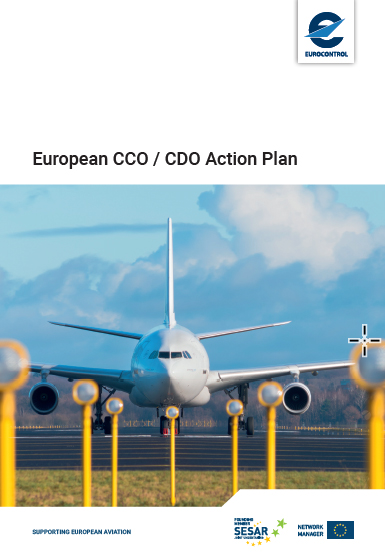
The SESAR Joint Undertaking has contributed to a recent action plan on optimising vertical flight profiles with a view to reducing emissions and noise. Gathering the inputs from European aviation partners, EUROCONTROL’s ‘Continuous Climb and Descent Operations Action Plan’ promotes a collaborative environment where stakeholders will work together in order to implement a set of recommended measures that will make aviation more sustainable by improving the efficiency of aircraft and the trajectories they fly.
The action plan contains multiple references to SESAR solutions that are fully ready for implementation and support the recommended measures. Examples include:
-
Precision area navigation (P-RNAV) in complex terminal manoeuvring area (Solution 62) provides a catalogue of structures that may alleviate the need for racetrack holding patterns. There are primarily two types of structures: trombones and point merge structures. In both cases, a path extension still exists, but it is more predictable for the flight crew than racetrack holding. In addition, the structures provide successive aircraft with lateral separation at an earlier stage than racetrack holding patterns, thereby making it unnecessary for ATC to provide vertical separation, which results in fewer restrictions in the descent.
-
Continuous descent operations using point merge (Solution 11), provides an alternative to Point Merge structures. Here, aircraft are vectored until they can be cleared direct to the merge point (‘Merge to Point’ procedures), while vectoring is moved further away from the airport, and all aircraft follow a repeatable flight path after they pass the merge point.
-
Complementing solutions 62 and 11 are the more advanced solutions of enhanced terminal operations with RNP transition to LPV (localiser performance with vertical guidance), and solution 9 enhanced terminal operations with automatic RNP transition to ILS / GLS. These solutions both enable a seamless transition from these airspace structures into the final approach path.
In addition, the action plan identifies where future research and innovation is needed to make these operations the norm. These include shallower or increased glide slope approaches; moving the objective from achieving a continuous vertical; permanent resume trajectory; dynamic attribution of arrival routes, etc.
Read about the solutions in the SESAR Solutions Catalogue
